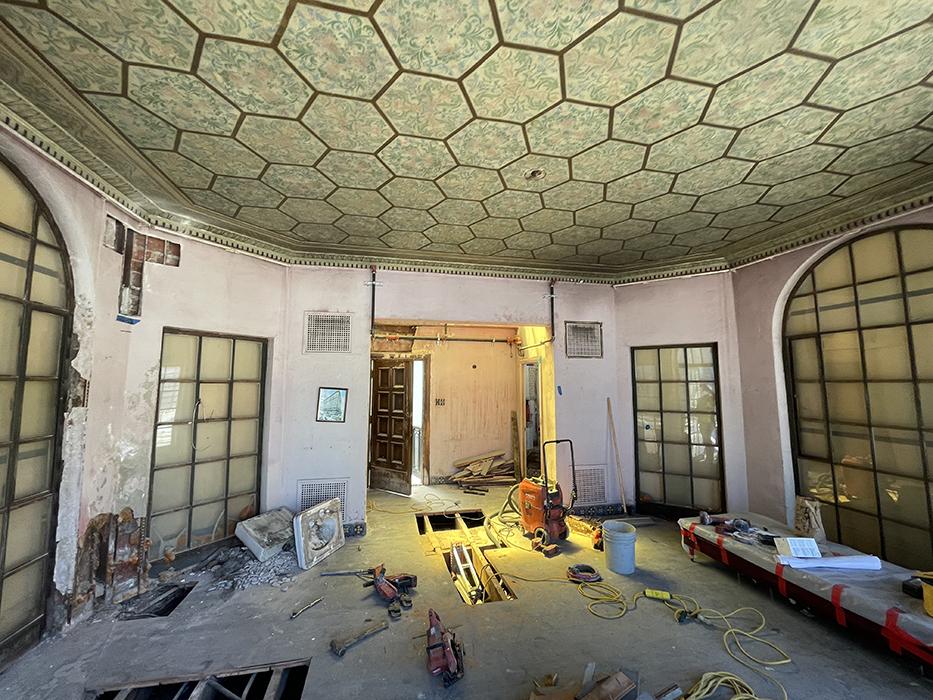
Phelan Building Penthouse Renovation
An urban abode with a storied history receives a seismic retrofit and performance improvement that preserves its unique features.
overview
The Phelan Building, located at 760 Market Street in downtown San Francisco, is an 11-story concrete and steel flatiron structure designed by William Curlett and built in 1908. It was financed by James D. Phelan, a former mayor of San Francisco and US senator. In 1926, a single-story Spanish Mediterranean−style penthouse “bungalow” was added on the roof to serve as Phelan’s private residence and space to entertain dignitaries. Most of the penthouse’s stucco, clay tile capped parapet, ornamental steel glass doors and windows, ornate moldings and decorative paint remain.
We provided design services for a seismic retrofit and performance improvement while working within the limits of areas to be historically preserved, all while conforming to the guidelines of the California Historic Building Code and the California Existing Building Code.
highlights
- Existing records of the penthouse were not provided, so we developed and comprehensive exploratory and investigation protocol that involved both destructive and nondestructive testing to explore the existing framing and architectural layers, as well as perform material testing for strength and design parameters.
- We developed a retrofit plan that involved a combination braced frame installation and mass reductions via the removal of hollow clay tiles, as well as anchoring to the main structure below.
- Historic preservation requirements meant the existing hand-painted ceiling of the residential portion must remain untouched, thus posing a challenge in both determining the existing framework of the roof during the exploration and investigation phases, as well as designing a feasible retrofit method that would have to be implemented from the top-down.
- Due to the wedge-shaped geometry and general lack of orthogonal lines, as well as the difference in roof elevations between to two penthouse areas, providing load path continuity required customized, non-traditional solutions including a buttressed collector between the two areas.
- The existing steel roof framing involved various eccentric connection types that required numerous custom connection retrofit details.
- Historic status: Article 10 designated historic districts and landmarks as city landmark 156; Article 11, Category 1 – Significant Building; the 1976 Department of City Planning Architectural Quality Survey with a rating of 5; San Francisco Architectural Heritage Survey with a rating of A; California Environmental Quality ACT (CEQA) classified at a Category A – Historic Resource Status; and National Register Survey with a rating of 3S.











